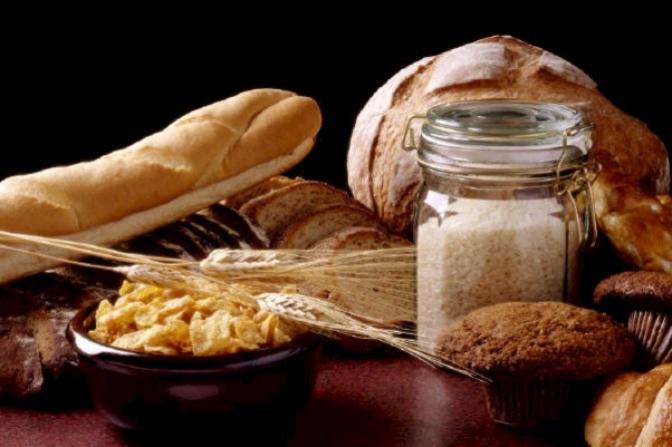Recently, quite often you hear about such a nutrition system as a gluten-free and gluten-free diet. Let's try to figure out what is common in them and how these systems differ. What is it - a commercial fiction, another fashionable trend, or is it still a useful diet-promoting diet?
What is gluten free?
Before we go directly to the diet, let's try to figure out what gluten is. So, this substance is a complex protein. Its main function is to collect or glue other proteins into one group. It is found in cereals such as barley, oats, and wheat.

Gluten in its pure form is gray, sticky, has no taste. This substance gives the products elasticity, works as a concentrate, and therefore it is often added in an artificial form, which has the name “modified food starch”, for example, in soy sauce, ketchup, meat and dairy products, and yogurts, thanks to gluten, acquire a particularly delicate taste. Another example is hamburger buns in fast food restaurants, which sometimes surprise with their stamina and firmness.
What is dangerous gluten?
In the world, about 1% of people suffer from celiac disease, or gluten enteropathy, in other words - gluten intolerance. In this case , the patient’s immune system perceives the protein as a foreign dangerous element with which it is fighting. In this case, the gluten-free diet is strictly contraindicated. Since the main danger lies not only in point strikes aimed at gluten. In addition, the area around, for example, gastric tissues that "receive" protein, is affected. Joints, the brain and the digestive tract also suffer.
The main signs of the disease are mood swings, increased fragility of bones, joint pain, and in children - lag in weight and height, vomiting, sudden fluctuations in appetite, and abdominal pain. In addition, gluten can cause other problems with the body, such as allergies, especially in young children.
Gluten and gluten free diets: which one to apply?
Nutritionists and doctors have not yet fully determined whether the gluten-free diet is dangerous for ordinary people who do not have congenital intolerance. Some experts believe that a number of people are sensitive to elevated levels of gluten in food. However, as a result of long years of plant breeding, cereal products have become very different from those that were used by our ancestors.
But for absolute certainty whether a gluten-free or gluten-free diet is right for you, you need to examine your blood serum for genetic markers, as well as take an immunological test. Since independent experiments with the choice of the nutrition system and the composition of its constituent elements can lead to serious consequences. The lack of gluten prevents the body from getting enough B and D vitamins, iron and magnesium.
Proper nutrition and gluten

What is getting stout from baking, and fast food is completely not healthy, is known to everyone. A gluten-free diet (expert reviews confirm this) has the following advantage - a healthy, balanced and proper diet. You will have to give up baking, chips, hot dogs, hamburgers, carefully look at the composition of meat and dairy products. Pay special attention to the quality of the products, not their appearance.
A reasonable question arises: "What does a gluten-free diet have to do with it?" After all, these are normal requirements for any person who responsibly approaches issues of their own health. In addition, the lack of gluten in foods is far from always a good indicator. As a rule, to improve the taste, manufacturers seek to replace the protein with a large amount of fat and sugar or other additives, which leads to the opposite result. A gluten-free diet is primarily a therapeutic and not a low-calorie diet.
Celiac disease: gluten-free diet, menu
Today, manufacturers are required to indicate on the product labels the ingredients that were used in their manufacture, as well as the presence of possible allergens, including wheat. Since the absence of wheat in the product does not mean at all that it does not contain gluten, you need to carefully study the information indicated on the labels.

It is advisable that patients with celiac disease keep a record of the foods they eat. This will help not only to understand how much nutrients your body gets, but also to prevent the use of foods that contain gluten.
Safe Food List
If you choose a gluten-free diet, cooking recipes should be based on the following ingredients:
- Chickpea / Lamb Peas.
- Linen.
- Corn.
- Cassava.
- Buckwheat.
- Cassava starch.
- Amaranth.
- Fig.
- Quinoa.
- Potatoes.
- Flour from the kernels of nuts.
- Millet.
- Legumes.
- Cuckoo tears.
- Indian rice grass.
- Yucca.
- Wild rice.
- Teff
- Tapioca.
- Sorghum.
- Soya.
- Cereals
- Sago.
Vegetables:
- Fresh, canned and frozen vegetables.
Fruits:
- Fruits and fruit juices.
Milk products:
- Cheese.
- Cottage cheese.
- Natural yogurt.
- Milk.
Meat products:
- Poultry meat, meat, shellfish, fish, eggs.
- Soybeans, peanut butter, nuts, dried peas and beans.
- Tofu Cheese.
Fats:
- Baking powder
- Fat.
- Vegetable oils.
- Margarine.
- Oil.
Beverages:
- Alcohol - rum, gin, wine and vodka.
- Carbonated drinks.
- Tea.
- Natural ground or instant coffee.
Miscellaneous:
- Black pepper.
- Olives.
- Jams and preserves.
- Jelly.
- Honey.
- Sugar.
Gluten-free enteropathy: diet
With celiac disease, the main treatment method is a gluten-free diet. Due to the fact that sensitivity to gluten is permanent, adherence to a strict diet as a prophylaxis and therapy should last a lifetime.

You can understand that a gluten-free diet, diet for weight loss are related. Their menu should not contain the following ingredients:
- Wheat (pasta, confectionery, bread, matzoh, couscous).
- Oats and rye (granola, oatmeal).
- Barley (cereals, beer).
- According to recent studies, oatmeal does not lead to the development of symptoms of this disease.
Gluten free diet - sample menu
Breakfast:
- Corn or rice bread with jam or honey.
- Cottage cheese, porridge from organic corn or buckwheat.
Dinner:
- Baked fish.
- Turkish red lentil soup or broccoli puree soup.
- Lettuce with olive oil.
Dinner:
- Buckwheat pancakes .
- Steamed or baked vegetables.
It is advisable to do without drinks containing caffeine, replace them with juice, green tea and plenty of water.
Gluten free diet - results, reviews
If you regularly adhere to a gluten-free diet, it will not only eliminate the disease, but also ensure the full functioning of the body.

Thus, the diet can prevent the inflammatory effect of gluten on the small intestine, thereby controlling the appearance of the corresponding symptoms. A gluten-free diet (patient reviews confirm this) reduces the percentage of complications, and more specifically: depression, neuropsychological diseases, epilepsy and malignant tumors.
But in severe cases of this disease, such a nutrition system will not help prevent the onset of symptoms. In such cases, prescription drugs that suppress the immune system are required.
Treatment menu for children
Introducing a gluten-free diet, you thereby provide the child with complete nutrition, eliminating the possibility of toxic effects of gluten on his body, improving digestion and increasing immunity.

Gluten-free diet for children allows the use of the following products:
- Vegetable or butter.
- Honey.
- Gluten-free substitutes for bread, pasta or confectionery.
- Weak teas, jelly.
- Berries, fruits and vegetables in any form.
- Baked, stewed and boiled meat.
- Steam omelet or hard boiled eggs.
- Dairy products.
- Milk exclusively in the composition of dishes (if there is no lactose deficiency).
- Porridge (millet, buckwheat, corn, rice).
- Vegetarian soups or on low-fat meat broth from any gluten-free cereal and vegetables.
Maybe it's not gluten.
Specialists noted that with gluten sensitivity, many symptoms can also manifest themselves in other components (except wheat flour) for foods such as cereal breakfast cereals, pasta and bread.

The main symptoms of gluten sensitivity are fatigue, headache, spastic abdominal pain, diarrhea, bloating, as well as signs associated with hyperactivity disorder and attention deficit disorder. Some people may feel the symptoms listed above when eating foods that contain gluten, simply because of suggestion.